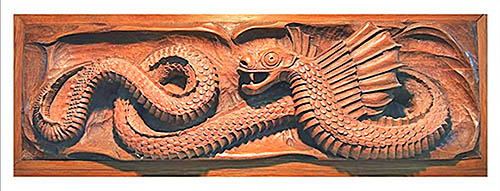|
Cuélebre
Cuélebre ( Asturian) or Culebre ( Cantabrian), is a giant winged serpent- dragon of the Asturian and Cantabrian mythology, that lives in a cave, guards treasures and keeps '' anjanas'' (also known as ''xanas'') as prisoners. Although they are immortal, the cuélebre age, and their scales become thick and impenetrable, and bat wings grow in their bodies. They must eventually flee Asturias and fly to the Mar Cuajada, a paradise located beyond the sea. They do not usually move, but when they do it, it is in order to eat cattle and people. One could kill the cuélebre by giving them a red-hot stone or a bread full of pins to consume. Its spit is said to turn into a magic stone, which heals many diseases. In Midsummer, which is a magical night in Asturian and Cantabrian folklore, it is possible for brave men to defeat the ''cuélebre'', whose spells don't take effect that night, and marry the xana and get the treasure. However, in Cantabrian areas it is said the night of Saint Barth ... [...More Info...] [...Related Items...] OR: [Wikipedia] [Google] [Baidu] |
La Guita Xica
La Guita Xica () is a dragon that appears amongst the legends of Catalonia beginning in 1890. The dragon had many names, including Guita Boja, La Guita Xica, Mulaguita, La Mulassa, Mula Fera, and Mula Guita. Its name transformed over time, originally started as Mulassa, then Mulaguita, and finally Guita by the twentieth century. The name La Mulassa comes from an older term, mulassas, meaning 'monstrous mules,' which was used in Catalan mythology to refer to mule-dragon hybrids. La Guita Xica was originally considered a demon, but has become a protective spirit over the past century. It is also called a tarasca, which is a name for draconic creatures of Spanish and Latin American folklore. La Guita Xica was half-mule and half-dragon. This comes from Catalan mountains where the mule remains a richly evocative animal. It had a strong practical importance, but it is also known for its temperament, which was disruptive and uneasy to the point where its domestication was considered u ... [...More Info...] [...Related Items...] OR: [Wikipedia] [Google] [Baidu] |
